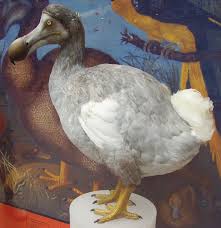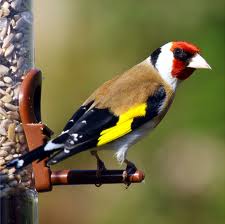 Birds are messengers of the gods. Why? What other earthly creature soars in the heavens? Here’s a quick glimpse of just some of the symbolism associated with our feathered friends.
Birds are messengers of the gods. Why? What other earthly creature soars in the heavens? Here’s a quick glimpse of just some of the symbolism associated with our feathered friends.
Albatross: This great seabird is symbolic of lengthy ocean journeys. In western cultures, it is unlucky to kill on. The albatross is also considered to possess a dead sailor’s soul.
Blackbird: For some reason this bird represents sexual temptation in Christian religions.
Crane: A multi-symbolic bird! In Asian cultures, the bird is symbolic of diplomacy. Egyptian myths believe it heralds wealth.
Dodo: Missing in action since the 17th century, this extinct bird represents the obsolete and dead.
and dead.
Dove: All cultures are in agreement! The biblical bird found in Noah’s story symbolizes the Holy Spirit, peace, the soul, God’s forgiveness, baptism, and love
.
Crow: Lots of different symbolism for the bird most believe represents bad luck and all things nasty. American Indians, however, see the bird as representing the creative.
Cuckoo: This bird lays its eggs in another bird’s nest ( which is where we get the word cuckold from), so it’s no surprise the bird is symbolic of infidelity and selfishness.
 Eagle: A bird of power, authority, victory, high status, and prowess. A divine messenger. A double-headed eagle graced a Roman Emperor’s coat of arms to signify the sovereignty of both its eastern and western empires.
Eagle: A bird of power, authority, victory, high status, and prowess. A divine messenger. A double-headed eagle graced a Roman Emperor’s coat of arms to signify the sovereignty of both its eastern and western empires.
Falcon: This swift flyer is symbolic of masculinity and spiritual freedom. In Egypt it was a symbol of kings. The falcon is a messenger employed by the ancestors of Native Americans.
Flamingo: A symbol of illusion and shape-shifting, the flamingo was revered as the personification of Ra, the Egyptian sun god.
Goldfinch: With its red face and penchant for hanging out in the thorns, the little bird came to symbolize the passion of Christ. It also represented protection from the plague.
came to symbolize the passion of Christ. It also represented protection from the plague.
Goose: Geese are associated with family, loyalty, and gossip. Their migration is symbolic of personal freedom.
Hawk: A bird linked to prophesy and divination, the hawk symbolizes, power, royalty, and wisdom.
Hen: A thousand years have passed and the iconic image of the overly protective mother is still going strong. The hen is also symbolic of divine intervention.
Heron: Ancient Egyptians believed the bird was a symbol of regeneration.
Ibis: An avatar of Thoth, the god of writing & scribes, the bird was considered symbolic of wisdom.
Jay: This nest-stealing, mischievous loud mouth is connected to trickery and bad luck. On the good side, it is viewed as an enemy-warning guardian to Native Americans.
Kingfisher: Linked to sexual bliss, speed, and grace (um…that’s an interesting trio).
 Magpie:In Europe, If you see only one magpie, bad luck is coming. If you live in China, the bird denotes love and good fortune.
Magpie:In Europe, If you see only one magpie, bad luck is coming. If you live in China, the bird denotes love and good fortune.
Nightingale: The melodic song of this bird has made it a symbol of yearning, love, and death.
- A little bird told me.
- I wanna fly like an eagle.
- The falcon cannot hear the falconer.
- He’s a chicken.
- He dresses like peacock.
- They’re acting like vultures!
- Twitter & tweets!!
Ostrich: To Babylonians this bird was considered evil incarnate. Zoroastrians deemed it divine. Its feather symbolized truth to Ancients Egyptians.
Owl: This night-flying bird of prey is associated with wisdom, witchcraft, and death.
Parrot: Polly wanna symbol? This tropical bird represents mimicry and love. Natives believes the bird carries prayers and delivers omens.
Peacock: The plumage of the male bird inspired an eyeful of symbolism. The strutting bird suggests beauty, love, vanity, and royalty.
.
Pelican: Myths contend that its young suckle blood from mama pelican’s breast–making the bird a symbol of charity and love.
Raven: Quoth the raven, “Nevermore.” Symbolic of dark and evil omens, the bird ( 2 of them, actually) hung out with Odin, the hunky Nordic god of war. Native Americans see this bird as a trickster.
Robin: Like most birds with red plumage, the robin is a symbol of the blood that flowed from Christ’s thorny crown.
Rooster: It’s too obvious, the fighting cock is symbolic of masculinity, dominance, and courage. Its image is ubiquitous on Shinto prayer drums. The rooster was a sacred bird to both Greeks and Romans.
courage. Its image is ubiquitous on Shinto prayer drums. The rooster was a sacred bird to both Greeks and Romans.
Quail: A bird of many symbols, a caged quail symbolizes a trapped soul. It is the bird of eroticism, and the courageous fighting bird of the Romans.
Sparrow: The bird of St. Francis, the sparrow represents one’s lowly station in life.
Stork: This is the sacred bird of the Greek goddess of childbirth, Hera. It’s no surprise then where the old “stork brought the baby” story got its start.
Swallow: It is the bird of death and resurrection, the bird that heralds springtime, the bird of departure and return (It’s a migratory thing).
 Swan: Yes, the ancient relief is disturbing, but we all know the Greek myth. Zeus morphs into a swan and ravages the lovely Leda. Have no idea then why the swan symbolizes beauty and purity. The one-mate-for-life swan also symbolizes fidelity.
Swan: Yes, the ancient relief is disturbing, but we all know the Greek myth. Zeus morphs into a swan and ravages the lovely Leda. Have no idea then why the swan symbolizes beauty and purity. The one-mate-for-life swan also symbolizes fidelity.
Vulture: A bird that feasts on carrion should symbolize death–and it does. But the scavenger also represents purification. Those in Tibet viewed the birds as transporters of the dead’s souls.
Wren: This wee tiny bird is symbolic of spirit, and known ironically as The King of Birds.
Note: I teach literary analysis ( must pay the bills) and remind my students to look closely at the symbolism in a novel. Why did the author include that fruit? Or name the character Neil? Why is the protagonist sitting under a pear tree? Why is her dress blue? Before jumping to any symbolic conclusions however, we look at the symbol in context of setting, history, and culture.
Related Links: Rock Your Writing; Symbolism & more symbols;















